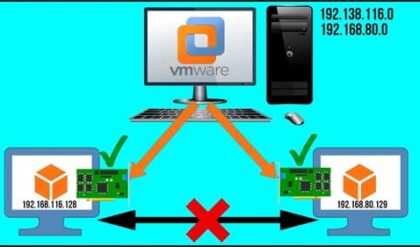Cyber threats are growing more sophisticated and frequent, posing immense risks to individuals and organizations worldwide. From ransomware attacks that lock down computer systems to data breaches exposing sensitive customer information, the impact of cybercrime can be devastating.
However, individuals and organizations can take meaningful steps to protect themselves through greater cybersecurity awareness and dedicated training initiatives.
What is Cybersecurity Awareness
Cybersecurity awareness refers to understanding the various cyber risks that exist and taking proactive steps to avoid falling victim. This includes identifying potential cyber threats and attacks and implementing best practices in software updates, strong passwords, encryption, backup procedures, and more.
For individuals, lacking cybersecurity awareness puts their personal data, financial information, and digital safety at risk. Individuals can easily fall prey to attacks like phishing emails aimed at stealing login credentials or malware that locks computer systems until a ransom is paid.
For organizations, poor cybersecurity awareness among employees can be disastrous, leading to exploited vulnerabilities that allow hackers access to proprietary data and IT infrastructure. This can carry staggering financial costs and permanently damage an organization’s reputation.
Recent surveys found that over half of data breaches are directly attributed to employee negligence or improper cybersecurity behavior.
Comprehensive awareness and training are essential for protecting both individuals and organizations in today’s digital landscape. Those equipped with greater cyber risk awareness are empowered to combat threats proactively.
Why is Cybersecurity Awareness So Important?
Cybersecurity awareness is essential for several reasons:
Protects Personal Data:
Greater awareness helps individuals identify risks and take action to safeguard their personal data from exploitation. This could involve avoiding unsecured public Wi-Fi networks when accessing sensitive accounts.
Prevents Financial Loss:
Scams and cyber attacks aim to steal money directly or extort individuals and businesses for quick financial gain. However, those aware of the deceptive tactics used in phishing emails, fraudulent phone calls, ransomware, and more can avoid falling victim and suffering direct financial consequences.
Safeguards Organizational Resources:
For businesses and other organizations, building employee awareness around cybersecurity plays a major role in protecting proprietary systems and data. Employees who need more awareness often make mistakes like opening malware attachments, writing down passwords insecurely, or accessing internal systems on unprotected networks. These errors serve as entry points for attackers trying to steal resources or disrupt operations.
Enhances Reputation:
Strong cybersecurity and rapid response to any incidents also help build customer and public trust. Individuals want to engage with businesses that demonstrate their ability to manage data and protect sensitive customer information from exposure competently.

Strategies for Enhancing Cybersecurity Awareness
Numerous strategies can be employed to enhance cybersecurity awareness:
Educate and Train:
Both individuals and organizations should seek out educational resources, attend cybersecurity training programs, and stay continually informed on risks and best practices. Popular methods include in-person workshops, interactive online courses, simulated phishing tests, and more.
Promote Secure Habits:
Once equipped with greater cybersecurity knowledge, individuals should adopt habitual behaviors and precautions accordingly. Examples include enabling multi-factor authentication when available, refraining from downloading attachments or software from unknown sources, frequently updating devices and accounts, and maintaining different complex passwords for each service.
Implement Security Policies:
Businesses can implement formal cybersecurity policies that dictate employee expectations, access controls, safe technology usage guidelines, protocols for reporting suspected threats, and disciplinary procedures. For example, policies may prohibit unauthorized app downloads or mandate device encryption for any employee handling customer data.
Monitor for Threats:
Employing security tools and services to monitor for potential cyber threats allows both individuals and businesses to respond to risks in real time. For enterprise organizations, Security Information and Event Management (SIEM) solutions can analyze user activity across business systems, detecting anomalies suggestive of compromise. At the consumer level, identity theft protection services notify individuals of any suspicious account access or credit activity indicating possible fraud.
Respond to Incidents Promptly:
Once a cybersecurity incident has occurred, promptly executing the appropriate response and recovery procedures is critical for minimizing adverse impacts. Organizations, in particular, must follow crisis management plans to lock down affected systems, notify stakeholders, accurately assess damage, restore business functions, and incorporate lessons learned to further strengthen defenses.
Seek Expert Assistance:
In the aftermath of a successful cyber attack against mission-critical infrastructure or sensitive data environments, leveraging IT security experts and firms to manage incident response procedures can help organizations restore secure operations as quickly and completely as possible. These specialists have the cutting-edge tools and forensic experience needed for tasks like eradicating malware from systems without data loss or interruption to business processes.
The Role of Cybersecurity Awareness Training
Cybersecurity awareness training plays a critical role in empowering individuals and organizations to protect themselves from cyber threats. Effective training programs should cover a range of topics, including:
Understanding Cybersecurity Risks:
Providing context on common threats like phishing, ransomware, social engineering scams, malware infections, denial-of-service attacks, and data breaches. It also covers potential entry points like unsecured Wi-Fi networks, pirated software or entertainment, and compromised websites harboring malware.
Identifying Phishing Attempts:
Phishing scams aimed at tricking victims into revealing passwords or financial data are ubiquitous. Training focuses on identifying deceitful emails using subtle technical clues like spoofed URLs, forged sender addresses, or embedded hyperlinks masking different destination websites. Forms of spear phishing targeting specific companies and whale phishing targeting high-profile executives also feature prominently in training content.
Password Security Best Practices:
Weak passwords remain one of the most common vulnerabilities exploited by attackers to infiltrate systems and accounts. Training, therefore, emphasizes proper password hygiene, including using passphrases over passwords, utilizing unique passwords for each account, using password managers to generate and store credentials securely, and with methods to safely reset passwords when needed.
Software Updates and Patches:
Allowing systems and software to remain outdated often enables hackers to take advantage of known vulnerabilities. Cybersecurity awareness courses thus stress the importance of promptly installing security patches, browser updates, firmware upgrades, and service packs to maintain defenses on devices and within applications.
Safe Online Behavior:
Employees often compromise security unintentionally through their daily online activities. Training thus covers secure browsing habits, safely accessing company data off-site, proper usage of email and collaboration platforms, and identifying legitimate websites and mobile apps.
Reporting Security Incidents:
Enabling individuals and organizations to report potential security incidents early allows faster response to mitigate threats before extensive damage occurs. Training details internal protocols employees follow when discovering anomalies like suspicious emails, unauthorized access attempts, lost devices, or unusual user activity.
Conclusion
Cyber threats pose severe risks to individuals and organizations in an increasingly digitized world. However, through comprehensive cybersecurity awareness training and converting knowledge into preventative actions, individual consumers and companies can equip themselves to thwart the most commonplace attacks. Continually investing time and resources into awareness training and secure technologies demonstrates an organization’s commitment to protecting sensitive assets and data.






